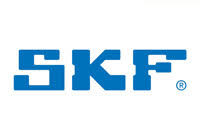Suspension link
Suspension links, along with the steering knuckle, wheel bearing, spring and shock absorber, are elements of the wheel suspension. Suspension links absorb the forces resulting from the driving dynamics. The bearings dampen the absorbed forces, which increases driving comfort.
Function
The suspension links take over both the tasks associated with wheel guidance and also frequently the transmission of spring, damping and anti-roll bar forces. Steel links are forged or cast, whereas links made from aluminium are forged or die-cast.
Links with ball joints are usually used for connecting the steering knuckle to the body at the front axle. This provides the required freedom of movement in the running gear.
Ball joints are not absolutely necessary at the rear axle. Therefore, rubber bearings or bushing links are usually used.
TYPES OF LINKS
The first thing that differentiates different types of suspension links is the number of connection points. Design requirements determine whether two, three, or four-point links are used.
The two-point link is the most simple in design. It has a ball joint and rubber bearing or two bearings (rubber or hydro bearing). Three-point links have a ball joint and two bearings (comfort mount and guide bearing). The four-point link – mainly used in commercial vehicles – has four connection points (two ball joints and two bearings, or four bearings).
Links are differentiated based on mounting direction:
- Wishbones: positioned transversely to the wheel plane
- Trailing arms: positioned in the driving direction
- Twist-beam link: involves two trailing arms which are connected with a transverse cross bar
Links are divided into three categories based on the function they are to perform:
Control arms
Control arms guide the wheel without supporting the weight of the vehicle. The forces applied at the joints of control arms are primarily axial.
Carrier arms
A carrier arm absorbs radial forces, such as the braking force and driving force. Together with the other parts of the running gear, it supports the weight force of the vehicle. In principle, any control arm can be used as a carrier arm subject to appropriate design where force application points and reinforcement are concerned.
Auxiliary links
Auxiliary links facilitate connections between control arms and carrier arms or, in the case of special axle designs, with the wheel carrier.
Safety
If suspension links malfunction or fail, this can have severe consequences for the road safety of the vehicle. To avoid any risks, it is vital that only trained personnel work on the running gear. They should regularly inspect and test all components.
Value retention
State-of-the art technologies are used in modern vehicles. These guarantee a long service life for the suspension links, which is also positively reflected in the breakdown statistics. In turn, this helps to stop a vehicle’s value depreciating.












